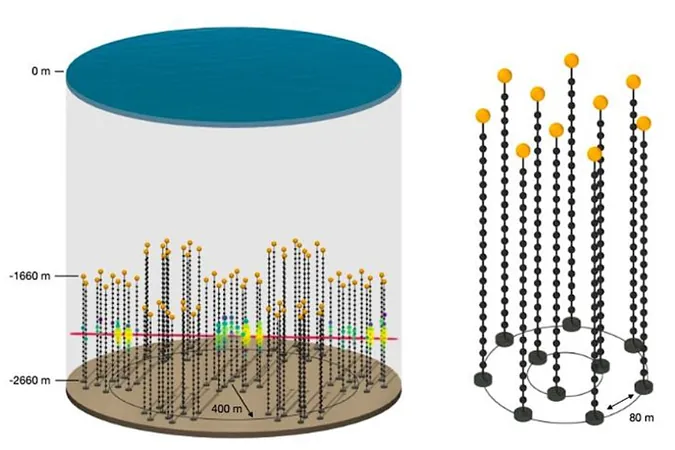
Dive into the Depths: How Undersea Astronomy is Set to Change Our Understanding of the Universe
2024-11-24
Author: Liam
Nanaimo Astronomy Society Explores Undersea Astronomy
This week, the Nanaimo Astronomy Society is set to explore a groundbreaking frontier in science—undersea astronomy. Members will engage with two experts from Ocean Networks Canada (ONC), diving deep into the fascinating interplay between solar storms and oceanic phenomena.
Impact of Solar Flares
It’s long been known that solar flares can wreak havoc on our planet’s infrastructure, affecting power grids and communication networks. However, in a stunning revelation during a solar storm in 2024, researchers found that these flares not only disrupt technology above water but also influence compasses located on the ocean floor. The strong magnetic interference was so pronounced that underwater instruments, anchored firmly to the seabed, began to exhibit erratic compass readings—a phenomenon that should be impossible unless physically obstructed.
Expert Insights
Benoît Pirenne, ONC's corporate innovation and technology officer, shared an anecdote about the unexpected data: “Our instruments are fixed to the seabed… you’d never expect to see changes unless impacted physically.” The bizarre readings sparked curiosity and confirmed that geomagnetic storms can indeed permeate into the depths of our oceans.
Understanding Solar Storm Dynamics
During the upcoming meeting, Kate Moran, the president and CEO of ONC, will discuss how understanding solar storm dynamics could provide invaluable data for researchers. In addition, Pirenne will elaborate on an ambitious initiative to establish an underwater observatory that can detect major cosmic events. This observatory aims to capture the faint flashes of light produced when high-energy neutrinos—nearly massless particles traveling at almost the speed of light—collide with oceanic particles.
Neutrinos and Cosmic Events
Neutrinos, often called "ghostly particles" due to their elusive nature, are produced by some of the universe's most violent occurrences, including supernovae and the mergers of black holes. According to Pirenne, the field of astronomy is rapidly evolving, as scientists now leverage multi-messenger astronomy, combining data received from neutrinos, gravitational waves, and traditional light-based measurements to gain deeper insights into cosmic phenomena.
Pacific Ocean Neutrino Experiment (P-ONE)
The groundbreaking Pacific Ocean Neutrino Experiment (P-ONE) will be an integral part of this undersea observatory initiative, set to commence its first deployment in 2025, some 2,600 meters below the surface off Vancouver Island. The full implementation of P-ONE, which could extend into the 2030s pending funding, aims to create a modular underwater telescope with components distributed over a volume larger than one cubic kilometer.
Challenges Ahead
Pirenne underscored the complexities involved, stating, “It’s a lot of sensors and a lot of data.” Each data collection string will weigh approximately seven tonnes, presenting formidable challenges for installation and data processing.
Join the Discussion
Astronomy enthusiasts are encouraged to attend the Nanaimo Astronomy Society’s next meeting, which will be held online via Zoom on Thursday, November 28, at 7 p.m. This is a unique opportunity to engage with cutting-edge research that merges the oceanic realm with the cosmic unknown. Interested members of the public can email [email protected] for access to the Zoom invite.
Final Thoughts
In an age where the boundaries of scientific inquiry are expanding, this venture into undersea astronomy not only illuminates the depths of our oceans but also sheds light on the vast mysteries of the universe. Don’t miss your chance to be part of this monumental journey into the cosmos!









 Brasil (PT)
Brasil (PT)
 Canada (EN)
Canada (EN)
 Chile (ES)
Chile (ES)
 España (ES)
España (ES)
 France (FR)
France (FR)
 Hong Kong (EN)
Hong Kong (EN)
 Italia (IT)
Italia (IT)
 日本 (JA)
日本 (JA)
 Magyarország (HU)
Magyarország (HU)
 Norge (NO)
Norge (NO)
 Polska (PL)
Polska (PL)
 Schweiz (DE)
Schweiz (DE)
 Singapore (EN)
Singapore (EN)
 Sverige (SV)
Sverige (SV)
 Suomi (FI)
Suomi (FI)
 Türkiye (TR)
Türkiye (TR)